
How to Use DS18B20 Temperature Sensor: Examples, Pinouts, and Specs
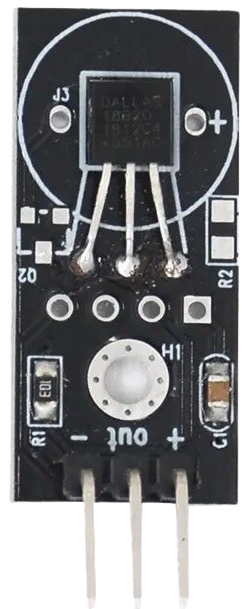
 Design with DS18B20 Temperature Sensor in Cirkit Designer
Design with DS18B20 Temperature Sensor in Cirkit DesignerIntroduction
The DS18B20 is a digital temperature sensor that provides temperature readings in degrees Celsius with an accuracy of ±0.5°C. It communicates with microcontrollers and other digital devices using the 1-Wire protocol, which allows multiple sensors to be connected to a single data wire. This sensor is widely used in a variety of applications, including environmental monitoring, home automation, and industrial control systems.
Explore Projects Built with DS18B20 Temperature Sensor
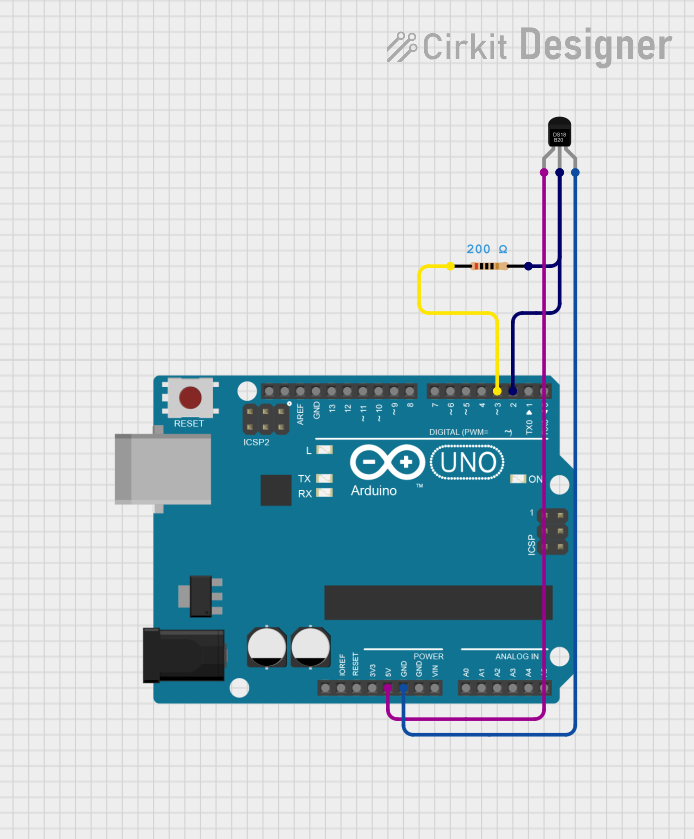
 Open Project in Cirkit Designer
Open Project in Cirkit Designer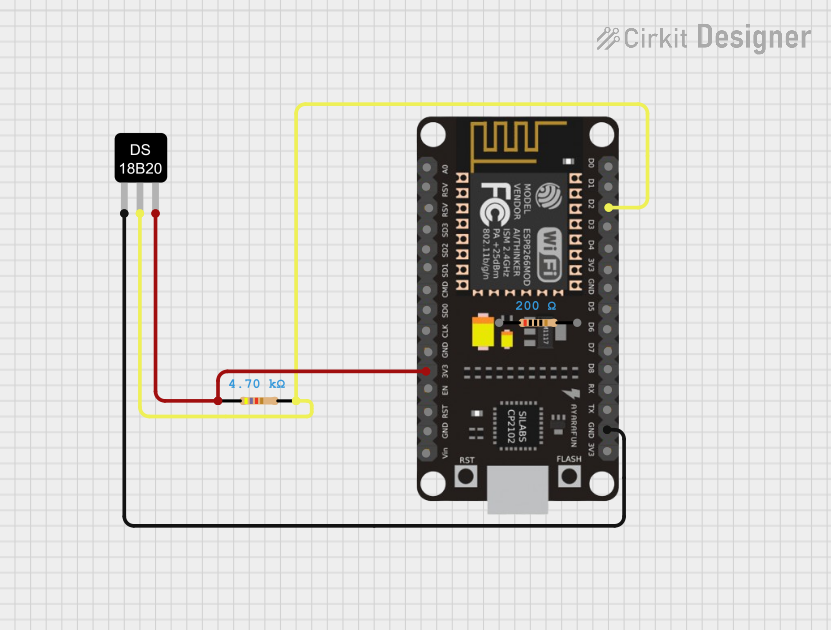
 Open Project in Cirkit Designer
Open Project in Cirkit Designer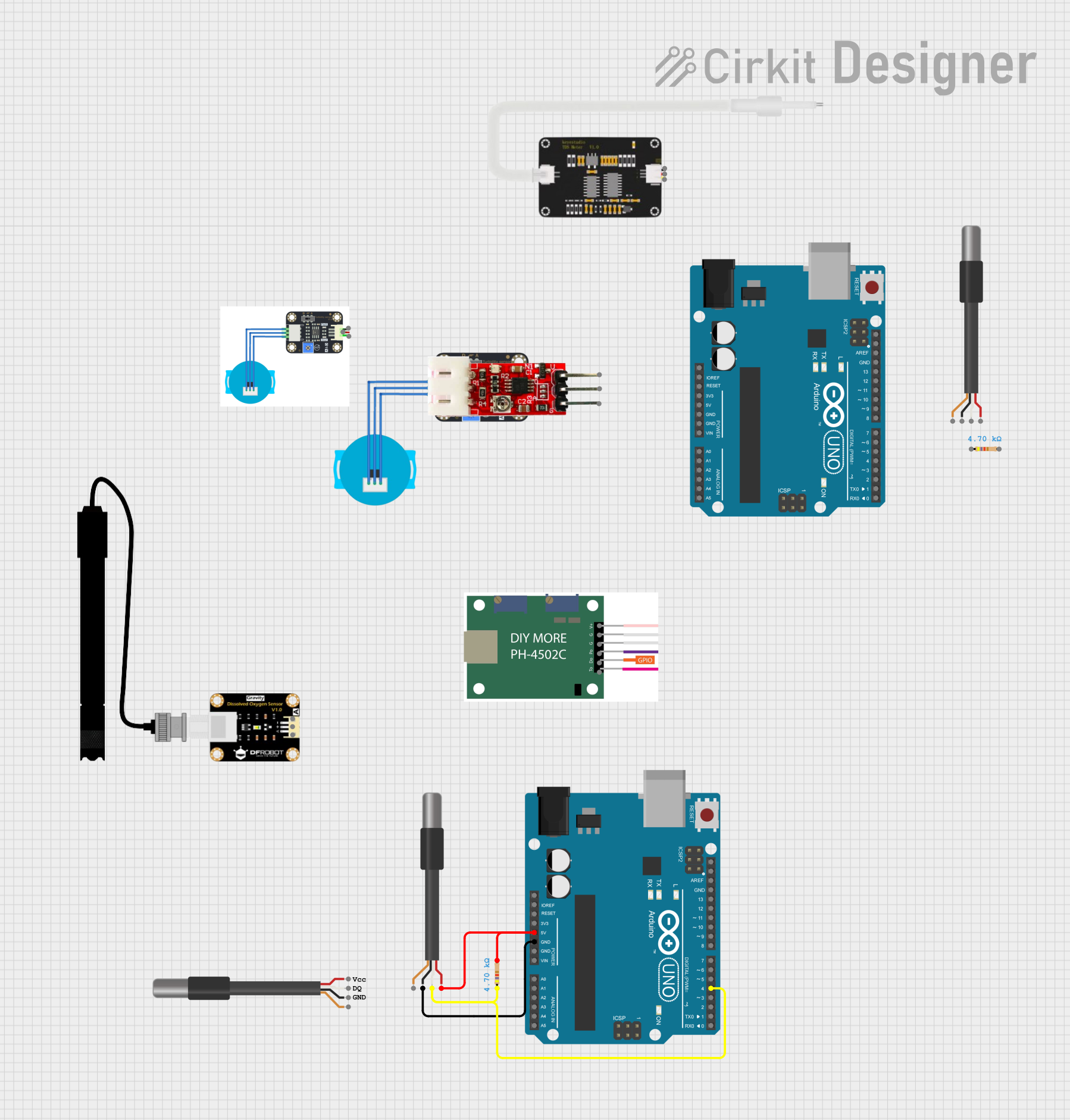
 Open Project in Cirkit Designer
Open Project in Cirkit Designer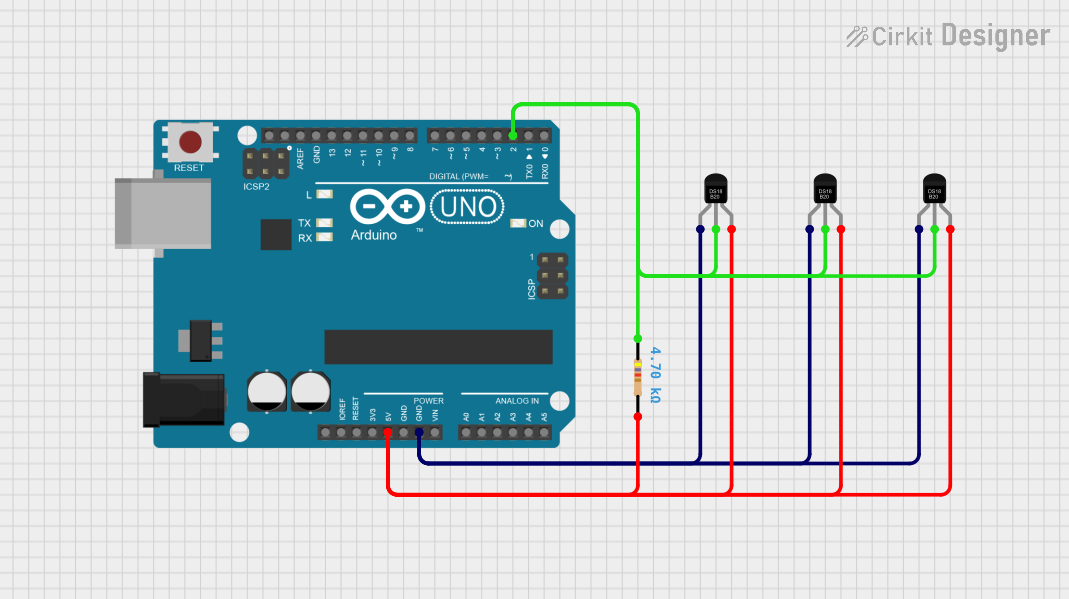
 Open Project in Cirkit Designer
Open Project in Cirkit DesignerExplore Projects Built with DS18B20 Temperature Sensor

 Open Project in Cirkit Designer
Open Project in Cirkit Designer
 Open Project in Cirkit Designer
Open Project in Cirkit Designer
 Open Project in Cirkit Designer
Open Project in Cirkit Designer
 Open Project in Cirkit Designer
Open Project in Cirkit DesignerTechnical Specifications
Key Technical Details
- Supply Voltage: 3.0V to 5.5V
- Operating Temperature Range: -55°C to +125°C
- Accuracy: ±0.5°C from -10°C to +85°C
- Resolution: Selectable from 9 to 12 bits
- Unique 64-bit Serial Code: Allows for multiple sensors on the same 1-Wire bus
- Conversion Time: 750ms at 12-bit resolution
Pin Configuration and Descriptions
| Pin Number | Name | Description |
|---|---|---|
| 1 | GND | Ground pin, connected to the system ground |
| 2 | DQ | Data pin, used for 1-Wire communication |
| 3 | VDD | Power supply pin, 3.0V to 5.5V |
Usage Instructions
Connecting the DS18B20 to a Circuit
- Connect the GND pin to the ground of the power supply.
- Connect the VDD pin to a 3.0V to 5.5V power supply.
- Connect the DQ pin to a digital input/output pin on your microcontroller.
- Place a 4.7kΩ pull-up resistor between the DQ pin and the VDD pin.
Important Considerations and Best Practices
- Ensure that the power supply voltage is within the specified range to avoid damaging the sensor.
- Use the 4.7kΩ pull-up resistor on the DQ line for reliable communication.
- Avoid running the sensor wires close to high-voltage or high-current lines to minimize interference.
- For long cable runs, consider using a lower value pull-up resistor and shielded cable.
Example Code for Arduino UNO
#include <OneWire.h>
#include <DallasTemperature.h>
// Data wire is connected to pin 2 on the Arduino
#define ONE_WIRE_BUS 2
// Setup a oneWire instance to communicate with any OneWire devices
OneWire oneWire(ONE_WIRE_BUS);
// Pass our oneWire reference to Dallas Temperature sensor
DallasTemperature sensors(&oneWire);
void setup(void)
{
// Start serial communication for debugging
Serial.begin(9600);
// Start up the library
sensors.begin();
}
void loop(void)
{
// Request temperature measurements from the sensor
sensors.requestTemperatures();
// Fetch and print the temperature in Celsius
Serial.print("Temperature is: ");
Serial.print(sensors.getTempCByIndex(0));
Serial.println("°C");
// Wait 1 second before requesting new data
delay(1000);
}
Troubleshooting and FAQs
Common Issues
- No Temperature Readings: Ensure the pull-up resistor is correctly placed and the sensor is properly powered.
- Inaccurate Readings: Check for proper grounding and stable power supply. Ensure the sensor is not exposed to rapid temperature changes.
- Multiple Sensors Not Working: Verify each sensor has a unique address and that the 1-Wire bus is correctly configured.
Solutions and Tips for Troubleshooting
- Double-check wiring, especially the pull-up resistor on the DQ line.
- Use the
sensors.getAddress()function to ensure each sensor has a unique address. - For issues with multiple sensors, use the
sensors.search()function to find all devices on the bus.
FAQs
Q: Can I use the DS18B20 sensor without an external power supply?
A: Yes, the DS18B20 supports "parasite power" mode, where it draws power from the data line. This requires only two wires: the data line and ground.
Q: How many DS18B20 sensors can I connect to a single microcontroller pin?
A: You can connect many sensors to a single pin, limited by the bus capacitance and the quality of your pull-up resistor. In practice, around 10-20 sensors are often manageable.
Q: How do I waterproof the DS18B20 sensor for outdoor use?
A: You can purchase the DS18B20 in a waterproof probe form, or you can waterproof a standard sensor using appropriate sealing techniques and materials like heat shrink tubing and silicone sealant.